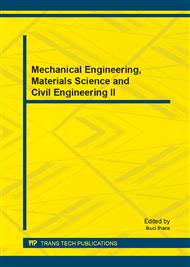p.495
p.499
p.504
p.510
p.516
p.521
p.525
p.529
p.534
Effect of Mixed Convective Heat Transfer on Interior Helium Temperature of High-Altitude-Cruising Airships
Abstract:
This paper aims to establish a thermal analysis model for stratospheric airships. Mixed convective heat transfer between envelope and air has been specially considered. Thermal analysis of HAB on the summer solstice was carried out in this paper, results show that forced convective heat transfer coefficient increases obviously as the air speed decreasing, which will enhance the heat transfer between envelope and atmospheric. The pressure difference decreases obviously as air speed increasing during the whole day. Therefore HAB(high altitude balloon) should increase the air speed to reduce the pressure difference, which will enhance the safety of HAB.
Info:
Periodical:
Pages:
516-520
Citation:
Online since:
December 2013
Authors:
Price:
Сopyright:
© 2014 Trans Tech Publications Ltd. All Rights Reserved
Share:
Citation:


